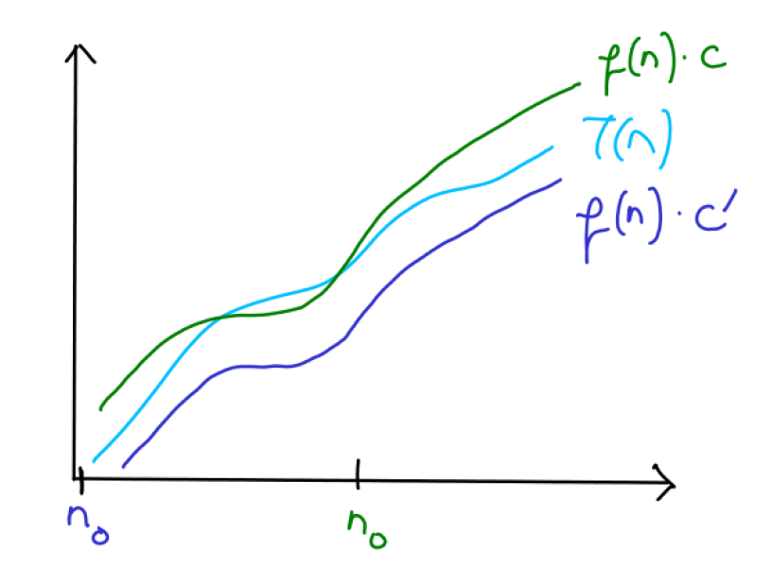Big Theta
- Express the mathematical definition of Big Theta.
Big Theta is used to describe asymptotic tight bound!
$$ T(n) \in \Theta(f(n))\Leftrightarrow \exists \; c_1 > 0, c_2 > 0, n_0 > 0 $$
$$ s.t. \; \; c_1\cdot f(n) \le T(n) \le c_2\cdot f(n) \; \; \forall \; n \ge n_0 $$
Read it as
$T(n)$ is a member of $\Theta(f(n))$ if and only if there exist positive constants $c_1$, $c_2$ and $n_0$ such that $c_1\cdot f(n) \le T(n)\le c_2\cdot f(n)$ for all $n\ge n_0$.
$\Theta(f(n))$ is the set of functions that grow no faster and no slower than $f(n)$.
Here is a pictorial illustration of the above definition:

If you want to show that $T(n) \in \Theta(f(n))$, you need to choose the constants $c_1$, $c_2$, and $n_0$ so that above definition holds whenever $n \ge n_0$.
Exercise The running time of an algorithm is $T(n)=7n^2+5$. Show that $T(n) \in \Theta(n^2)$.
Solution
We can choose $c_1=7$, $c_2=12$, and $n_0=1$ for the definition of Big Theta to hold.
$$ 7n^2 \le 7n^2 + 5 \le 12n^2 $$
Please note, another way of defining Big Theta is as follows:
$T(n) \in \Theta(f(n))$ if and only if $T(n) \in \Omicron(f(n))$ and $T(n) \in \Omega(f(n))$.
Note that Big Theta describes a tight bound. So it is a stronger statement than Big-Oh and big Omega.
Resources
- Khan academy's article on Big Theta notation
- freeCodeCamp's article Big Theta and Asymptotic Notation Explained
- What exactly does big Ө notation represent? on StackOverFlow.